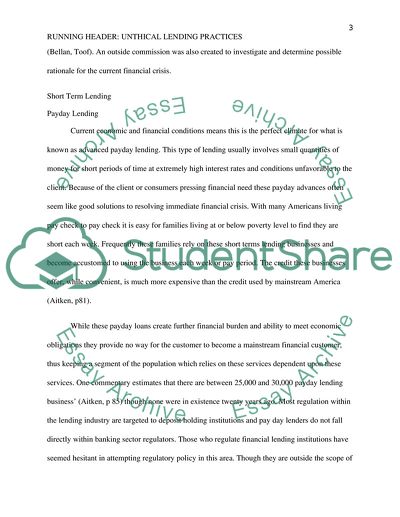Cite this document
(Unethical Lending Practices Assignment Example | Topics and Well Written Essays - 3000 words, n.d.)
Unethical Lending Practices Assignment Example | Topics and Well Written Essays - 3000 words. Retrieved from https://studentshare.org/finance-accounting/1764470-unthical-lending-practices-financial-2008
Unethical Lending Practices Assignment Example | Topics and Well Written Essays - 3000 words. Retrieved from https://studentshare.org/finance-accounting/1764470-unthical-lending-practices-financial-2008
(Unethical Lending Practices Assignment Example | Topics and Well Written Essays - 3000 Words)
Unethical Lending Practices Assignment Example | Topics and Well Written Essays - 3000 Words. https://studentshare.org/finance-accounting/1764470-unthical-lending-practices-financial-2008.
Unethical Lending Practices Assignment Example | Topics and Well Written Essays - 3000 Words. https://studentshare.org/finance-accounting/1764470-unthical-lending-practices-financial-2008.
“Unethical Lending Practices Assignment Example | Topics and Well Written Essays - 3000 Words”, n.d. https://studentshare.org/finance-accounting/1764470-unthical-lending-practices-financial-2008.


